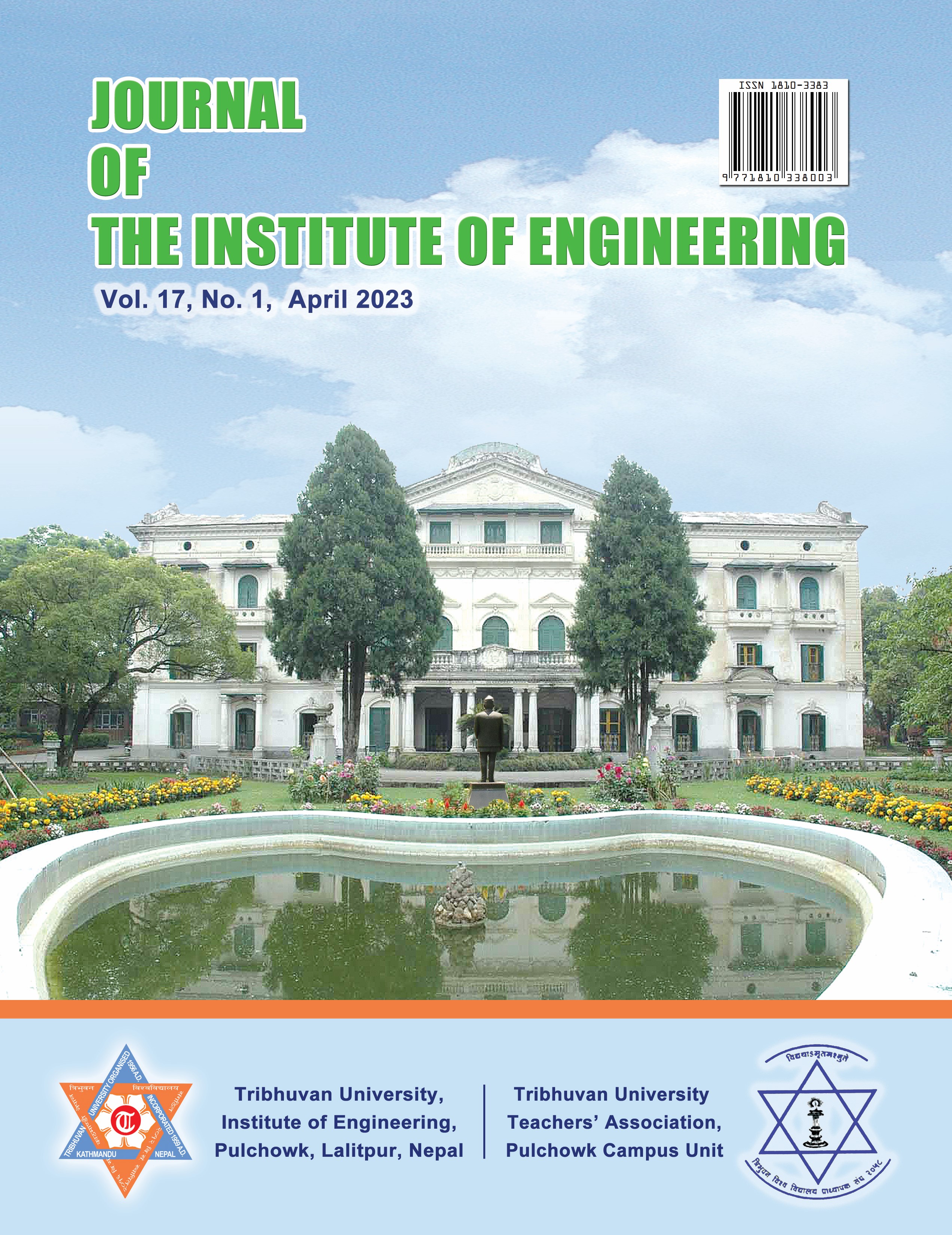Life Cycle Energy Analysis of the Academic Building: A Case Study of Shree Balpremi School in Kathmandu Valley, Nepal
DOI:
https://doi.org/10.3126/jie.v17i1.64594Keywords:
Academic building, Embodied energy, Energy consumption, Life cycle assessmenAbstract
A comprehensive life cycle energy analysis of a 648.12 m2, three-story building with a projected 60-year life span was conducted. An inventory of all installed materials, material replacements for building structure, envelope, interior structure, and finishes is prepared. The embodied energy calculated for construction phase showed that the foundation, structural frames, masonry work and finishing work represent 22%, 32%, 14% and 13% of the total embodied energy, respectively. The concreting work represents 59% of the total embodied energy. The masonry work represents 16% of the total embodied energy. The material footprint during construction is 1448.77 kg/m2. Computer modeling is used to determine primary energy consumption for cooling and lighting of the building. The primary energy intensity over the building’s life cycle was 2.9 x 104 GJ. The production of building materials, their transportation to the site, and the construction of the building accounts for 12.11% of life cycle primary energy consumption. The remaining 87.89% was the operational energy of the building. It clearly showed that lifecycle distribution of energy consumption was concentrated in the operation of the building. This study shows that the life cycle energy analysis of a building can successfully lead to sustainable and energy-efficient building construction. In a broader sense, building life cycle energy analysis will assist in understanding the energy consumption pattern of a building, which can be used to maintain energy efficiency in the design and construction of the building.
Downloads
Downloads
Published
How to Cite
Issue
Section
License
The Copyright is held by Journal of the Institute of Engineering, IOE, TU




